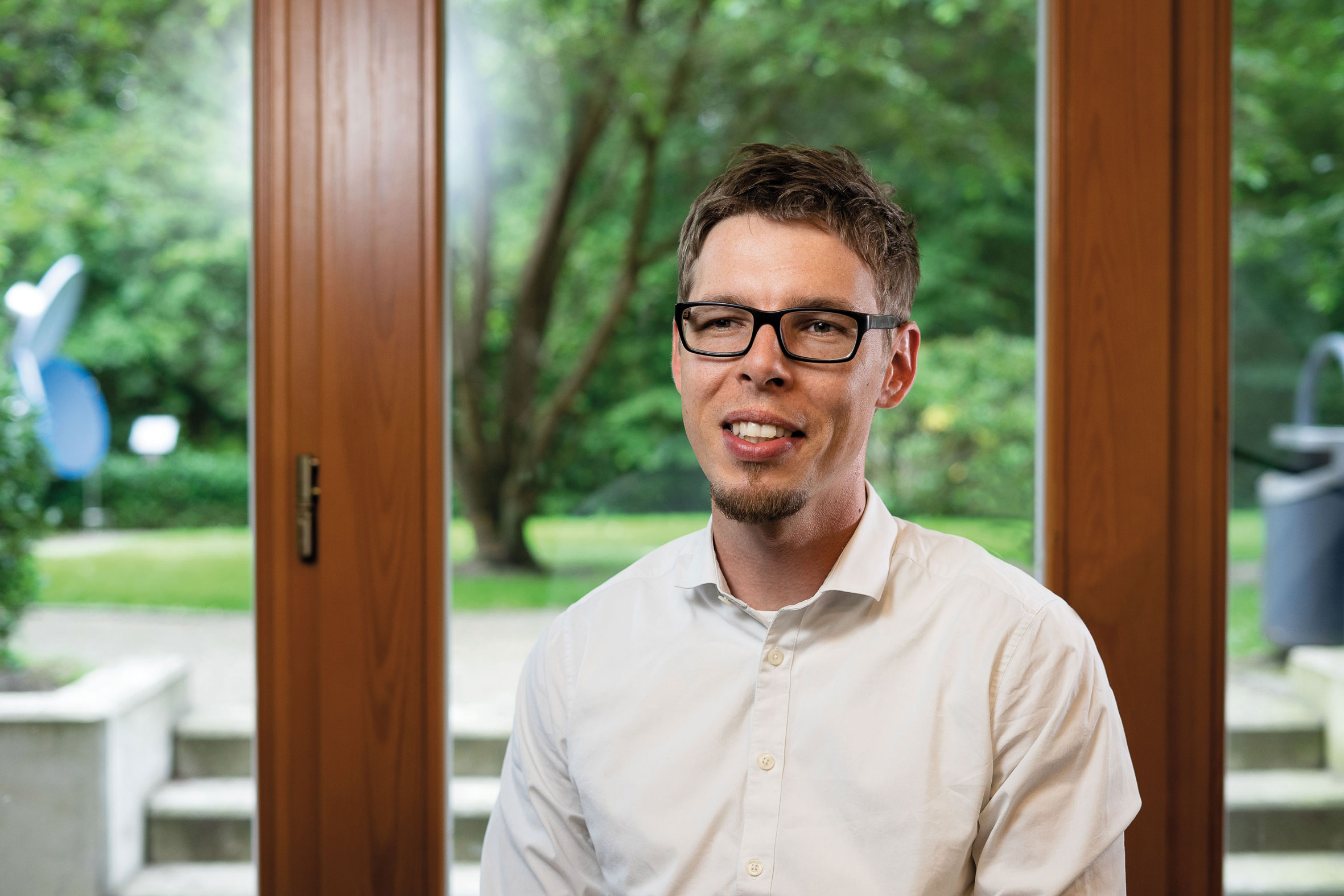Interview with Danilo Hollosi
As a component of industrial conveyor and drive systems, axial piston pumps are in widespread use. An unforeseen breakdown in this equipment means high costs. That is why researchers at the Fraunhofer IDMT in Oldenburg have selected the axial piston pump as a case example for the acoustic monitoring of machines. With the aim of preventing costly consequential damage, the experts in the Hearing, Speech and Audio Technology Division (HSA) are able to recognize when the pump is no longer running from the noise it makes. Acoustic event monitoring can also be used as part of remote maintenance and control. In this way and similar to a modern aircraft engine, pump performance can be marketed as a service. Interview with Danilo Hollosi, Head of Group »Acoustic Event Detection«.

Interview with Danilo Hollosi
Mr Hollosi, you say that you’re teaching computers to hear. Do they hear better than the ‘old hand’ in the machine room?
Machines hear better, namely in frequency ranges where the ‘old hand’ hears nothing at all. But our technology can also be used in environments where people don’t want to stay long or shouldn’t, hears objectively and equally well regardless of the time of day and is always on the spot without needing to be in direct contact with the machine.
What’s special about this solution?
Our retrofittable sensor platforms with lovely names such as »Krill« and »Octopus« make it possible to predict and identify different types of condition, such as bearing clearance, slide shoe damage or cavitation wear. Besides this, for each condition spotted an action can also be defined which is triggered automatically. For example, the controlled shutdown of a plant can prevent greater damage as well as the interruption of a superordinated process, so the belts don’t need to stop. This allows for better maintenance planning and helps maintenance staff by delivering concrete information about the damage. And this without connecting to the internet. Our solution is designed for safety-critical applications as well as top data security and with it we can satisfy even the highest demands. An important added value of the monitoring system stems from the fact that a large part of data processing already takes place on the sensor.
At the Hanover Fair in 2018 you showed business cases for scalable services on the basis of your freely configurable sensor nodes. What approach are you pursuing with your software?
With our clear graphical user interface, we show a possible human-machine interface that on the one hand visualizes acoustic events and on the other hand allows a configuration of the sensor nodes which also goes beyond the axial piston pump application. For example, it is possible to integrate the following additional functions: Distress calls, step detection or speech recognition. However, the most important factor is the interface expertise we provide for our customers’ ecosystems: With our acoustic ‘Condition Monitoring’ system, reliable machine performance can be offered as a service and marketed with alternative business models, e.g. via leasing. The data generated are made available for further use in the context of Industry 4.0.
»Pump performance as a service opens up new business models for plant suppliers and alternative supply sources for their customers.«
What happens next?
We’re working together with our partners on further business cases for scalable monitoring services on the basis of our acoustic sensor systems. Our activities in the area of pump monitoring are application-oriented and accompanied by strong partners. In the framework of the »ACME 4.0« project financed by the Federal Ministry of Education and Research, we’ve already managed to reach Technology Readiness Level 7. Our industrial partners in the project are Bosch Rexroth AG and Infineon Technologies AG. With our partners and end unsers in industry, we’re working on further developing the technology and putting it into practice. We’re operating here in the energy sector and water management, heavy industry, special purpose machinery, plant construction and conveyor systems. Apart from pumps, we also listen to engines, turbines and compressors. We’re working closely together with manufacturers and suppliers in the automotive sector on the self-driving, »hearing car« of the future, which, for example, will recognize emergency vehicle sirens or the sound of children’s voices.
Last modified:
 Fraunhofer Institute for Digital Media Technology IDMT
Fraunhofer Institute for Digital Media Technology IDMT